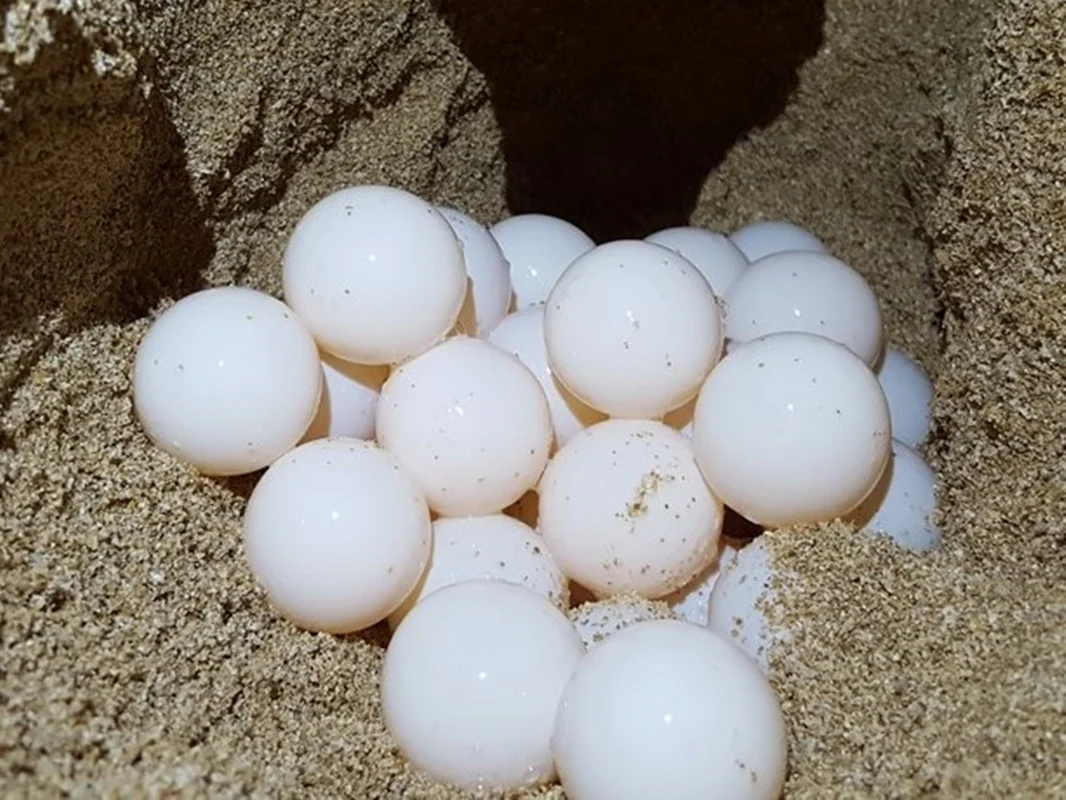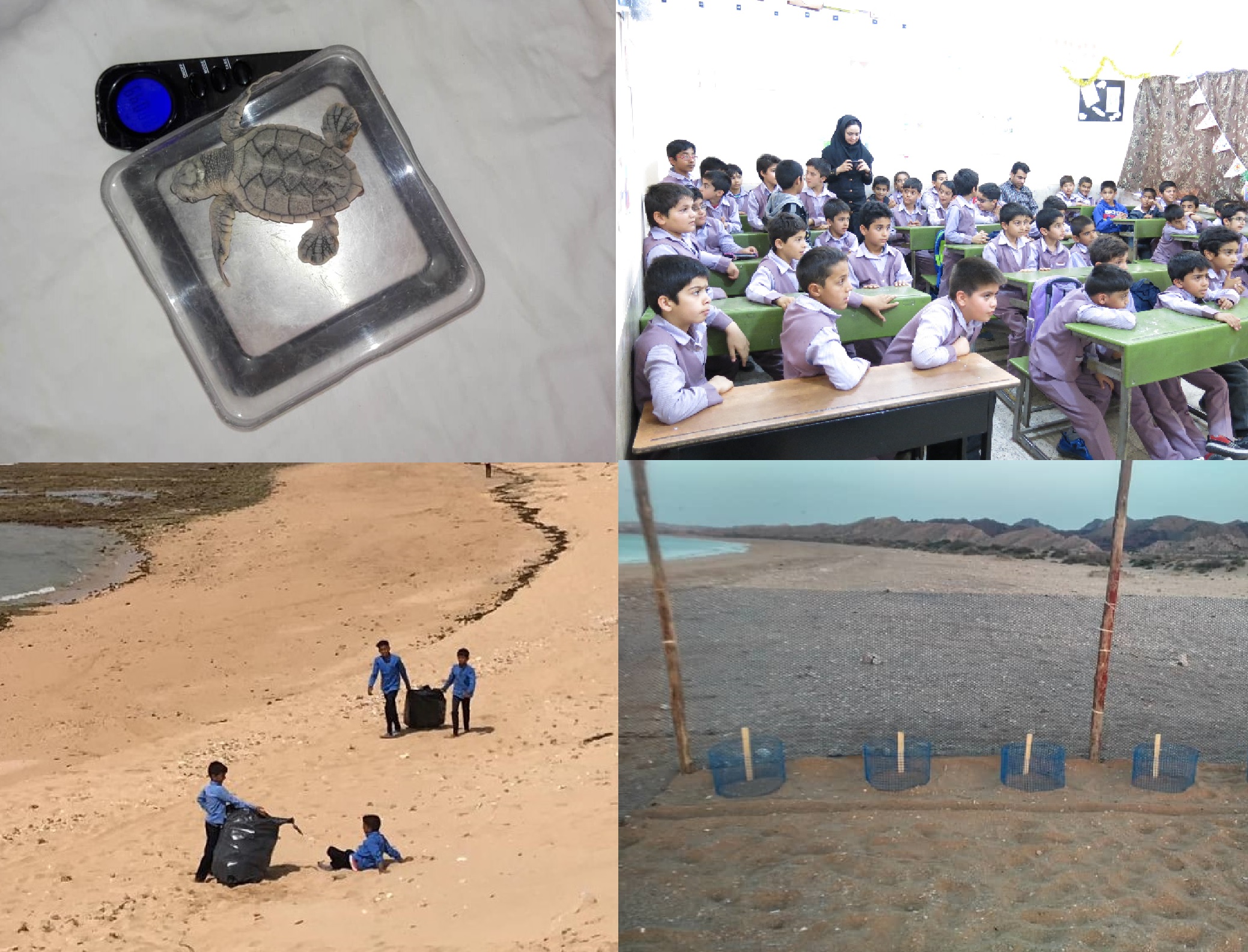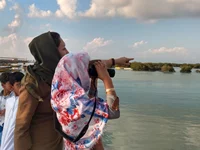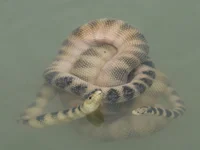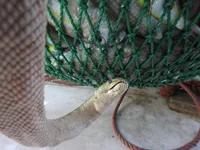Protection of sea turtles in Bushehr Province
Duration: 2014 – 2015
Type: Research + Science-based solutions + Education and rising awareness + Direct conservation actions
Taxon: Sea turtles
Project administrator: Prof. Majid Askari-Hesni, Shahid Bahonar University of Kerman
QECI's Role: Scientific advisor
Sponsor:

Coastal waters of Bushehr Province comprise diverse marine habitats, such as mangrove stands in the delta of Mond River, the reef communities of Nayband Bay, seagrass and seaweed meadows, and many remote islands that host nesting birds and sea turtles. Hence, some of the largest Iranian marine protected areas (MPAs) are located along the coast of Bushehr Province, including Nayband National Marine Park, Dayer-Nakhiloo National Park, Khark Wildlife Refuge, and Kharko National Natural Monument.
- We are always eager to cooperate in marine conservation projects that work in line with our mission: doing research, developing science-based solutions, taking direct actions, and raising awareness! The sea turtle conservation project in Bushehr Province reached all these goals. Clockwise from up-left: weighting a hawksbill hatchling in Nakhiloo Island; students came together to learn about the wonderful world of sea turtles; students volunteer for a plastic cleanup program before nesting season; a hatchery site built in a mainland nesting shore where nests are highly threatened by predation.
Many sandy shores of these MPAs are known as nesting grounds for sea turtles, mainly hawksbill turtles, but also few green turtles nest on these shores, especially in Kharko Island. Further, in March 2013, an olive ridley turtle emerged onto the shore of Nayband National Marine Park to nest, which is the first record of the olive ridley nesting in the Persian Gulf (ref). Due to the importance of the MPAs as key sea turtle nesting grounds, this project has been carried out aiming to assess conservation status of nesting sea turtles, and developing scientific solutions and education programs to address the main threats.
The main threat for nesting sea turtles in the area was found to be habitat degradation due to anthropogenic activities and development (e.g. fishing, camping, constructing jetties). Therefore, a zoning program was developed and delivered to Iran Department of Environment (DOE) to be considered in managing the beaches. The team also trained the local communities to build hatchery sites for the mainland nesting grounds that had been threatened by egg-predation. Some educational programs were also held for local school children aiming to introduce the next generations to the wonderful world of sea turtles and the vital role that those amazing marine reptiles play in the marine environments.
 Publication:
Publication:
Monitoring hawksbill turtle nesting sites in some protected areas from the Persian Gulf


